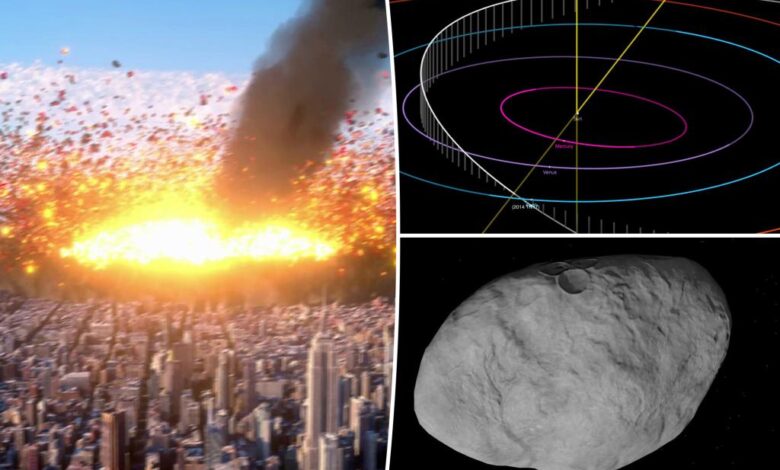‘City-killer’ asteroid 2024 YR4 won’t hit Earth in 2032 — but another threat looms


We could experience a rock market crash.
Asteroid 2024 YR4 won’t hit Earth in December 2032, but that doesn’t mean we’re out of the woods forever.
Researchers warn that “city killer” space rock could approach our planet again in the future, while another, “extinction”-causing asteroid could potentially threaten Earth as well, according to the Conversation.
On February 19, asteroid YR4 — which measures between 131 and 295 feet in diameter — had an impact risk factor of 3.1%, making it the most dangerous space rock since the inception of NASA’s Center for Near Earth Object Studies (CNEOS) Sentry Risk Table over ten years ago.
This collision probability dipped down to 0.0017% just a week later — effectively rendering us safe for the time being — but the asteroid’s unique orbit means it could potentially rock our world in the future.
YR4 is part of a class of asteroids called resonant asteroids, which are trapped in a trajectory that puts it within close proximity of the Earth every couple years, increasing the likelihood of it hitting home, according to the Daily Galaxy.
This fluctuating movement pattern is due to Jupiter’s gravitational pull, which alters the orbit of these asteroids over time. So while YR4 doesn’t threaten us in the foreseeable future, resonant asteroids like YR4 could theoretically pose a threat at any moment depending on their flight path.
Thankfully, after missing us in 2032, the heavily monitored asteroid’s next close approach to Earth is slated for 2052, although that’s not set in stone so to speak.
Recent data suggests that YR4 may shift to a less frequent orbit, decreasing the probability that it will be on a collision course — but it will still periodically fly by our planet.
That’s fortunate because if YR4 were to strike home, the deep impact would release an energy blast equivalent to 8 megatons of TNT — roughly 500 times the power of the atomic bomb dropped on Hiroshima — and could potentially threaten the lives of hundreds of millions of people.
Unfortunately, an impact on the moon can’t be dismissed with the last reported odds of a lunar crash landing hovering around 1.8%.
Perhaps more frightening is another resonant asteroid called 887 Alinda, which at 2.5 miles in diameter, is quite a bit bigger than YR4.
While this supersized space rock is also not on a crash path with Earth, it could potentially cause a global extinction event should its trajectory align with ours.
Unfortunately, this outcome may not be as rare as one would think.
“Both 887 Alinda and 2024 YR4 orbit the sun three times for every time the massive planet Jupiter goes around once,” study authors write. “Since Jupiter’s orbit takes 12 years, the asteroids will take four years to be back on similar paths in 2028. These special kinds of asteroids are dangerous, since they come back regularly.”
These aren’t the only space rocks on the radar. On March 26, at around 7:30 am, the asteroid 2014 TN17 came within 3.2 million miles of Earth or around 13 times further away than the moon, Livescience reported.
Measuring over 540 feet in diameter — slightly wider than the height of Egypt’s Great Pyramid of Giza — the space rock is large enough to wipe out a city. Fortunately, it poses zero probability of striking Earth now or in the future.
TN17 is one of 2,500 known potentially hazardous asteroids — Near Earth Objects that are larger than 460 feet wide and that could come within 4.65 million miles of Earth — according to the International Astronomical Union’s Minor Planet Center.
Another red-flagged rock is the hefty “god of chaos” asteroid Apophis, which will pass closer to Earth than some satellites in 2029.



